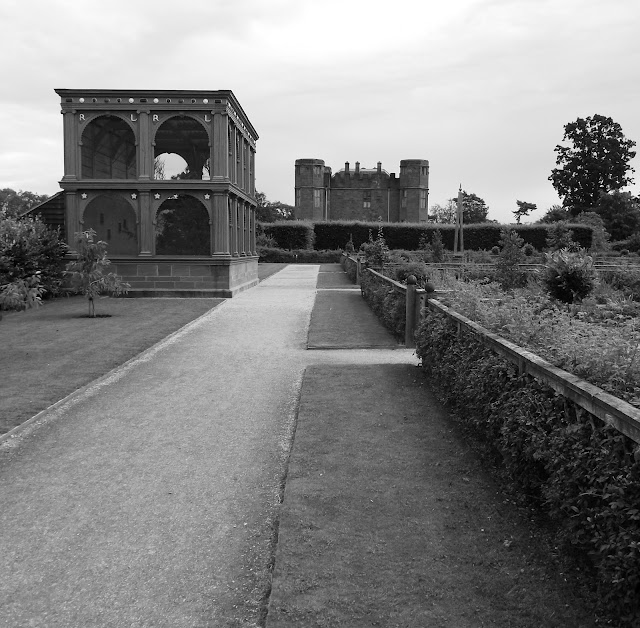The royal chamberlain Geoffrey de Clinton built the keep at Kenilworth in the 1120s. King John added, in the early 1200s, an additional circuit of walls and a dam in order to provide the castle with a defensive lake. But it was John of Gaunt who developed Kenilworth into a palace, principally through constructing the great hall (above), between 1373 and 1380.
In 1563 the castle was given by Queen Elizabeth I (Elizabeth for Scottish readers) to Robert Dudley, Earl of Leicester, quite possibly her lover but most certainly her favourite. Dudley lavished money on the palace, making it fit to receive his queen on her progresses through her realm.
Leicester caused to be built a new gatehouse (above and below) to provide a grand arrival space. Although the interior was solidly Elizabethan, the exterior design echoed the style of a century earlier, and has about it shades of the castle at nearby Kirby Muxloe. The gatehouse is virtually intact.
Dudley also created what is now known as the Elizabethan Garden, for the queen's fourth sojourn at Kenilworth, in 1575. Of 19 days' duration, such a visit would have financially ruined a less-favoured member of the court. The garden was recreated in 2009, and includes a large wooden aviary (below).

After the Civil War, in 1650, the defensive parts of the castle were slighted. Sir Walter Scott was inspired by the resultant ruins to pen his 1821 novel, Kenilworth. Since 1984 the castle has been in the care of English Heritage, who have carefully restored key elements without making Disney-esque mistakes.








